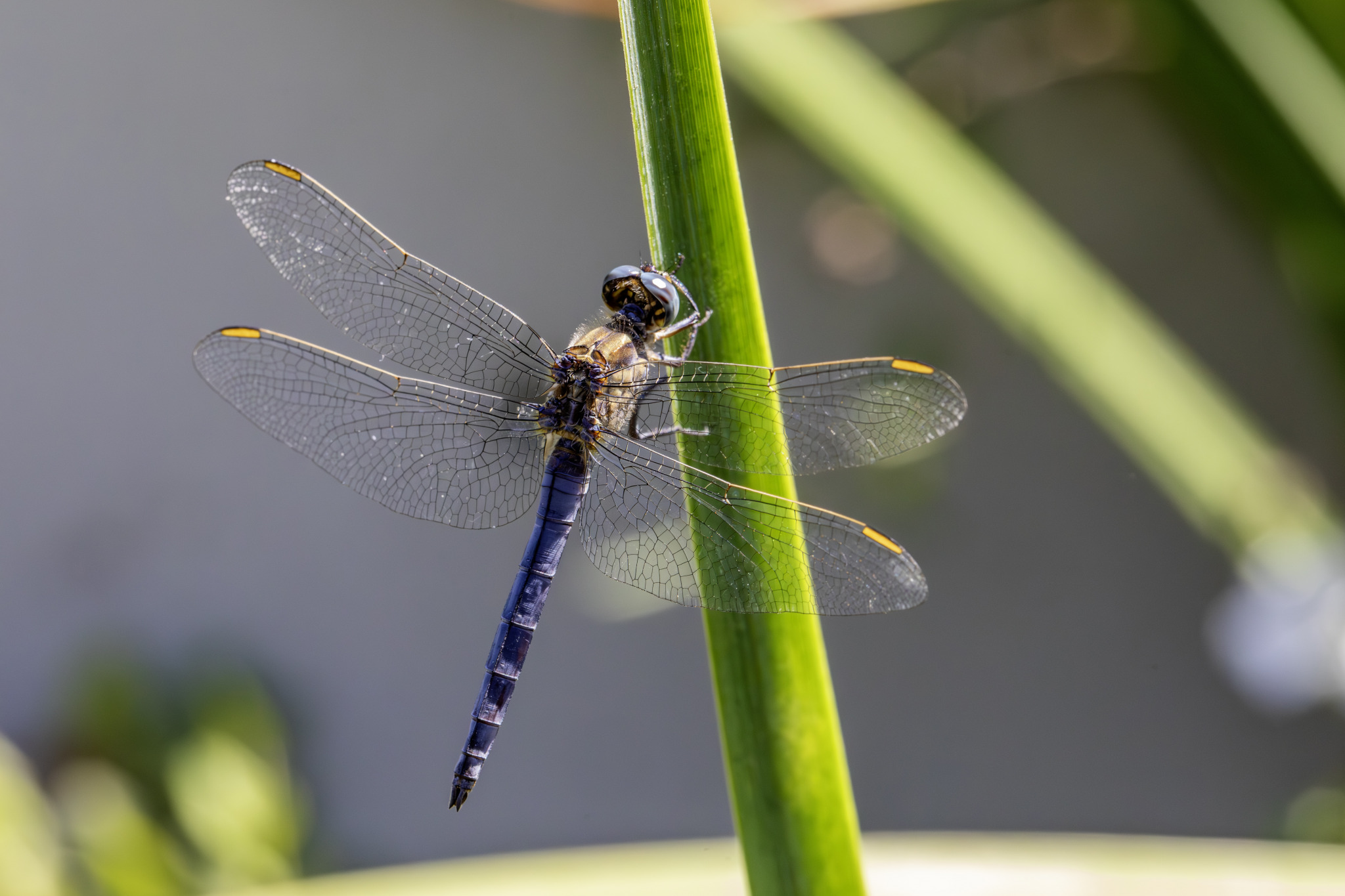The Keeled Skimmer (Orthetrum coerulescens) is a striking species of dragonfly known for its distinctive appearance and behavior. It is found in various regions across Europe and parts of Asia.
Description
- Size:
- Length: Approximately 35-45 millimeters (1.4-1.8 inches).
- Wingspan: Around 60-75 millimeters (2.4-3 inches).
- Appearance:
- Body: The Keeled Skimmer has a slender, elongated body that is typically blue in males and more brownish or greenish in females.
- Wings: Its wings are transparent with dark veins and may have a slight blue or brown tint depending on the light and age of the individual.
- Thorax: The thorax is a bluish or greenish color with fine black markings.
- Abdomen: The abdomen has a distinctive keel-like ridge on the top, which is the feature that gives the dragonfly its common name. This keel is most pronounced in mature males.
Habitat
- Distribution: The Keeled Skimmer is found across Europe and parts of Asia, including areas like Spain, France, Germany, and up to parts of the Middle East.
- Preferred Environment: It inhabits a variety of freshwater habitats including ponds, lakes, and slow-moving rivers. It prefers areas with abundant vegetation and sunny spots for basking.
Behavior and Ecology
- Feeding:
- Diet: The Keeled Skimmer primarily preys on small flying insects such as mosquitoes, midges, and other small flies.
- Hunting Style: It is an agile and fast-flying predator, often seen patrolling its territory or hunting near the water.
- Life Cycle:
- Eggs: Females lay eggs in or near water. The eggs are usually deposited in submerged vegetation or in the mud at the bottom of water bodies.
- Larvae: The larvae, or nymphs, develop underwater and can be found in a variety of aquatic environments. They undergo several molts before emerging as adults.
- Emergence: The transition from larva to adult, known as emergence, involves climbing out of the water and shedding the exoskeleton, which is a delicate process.
- Adult: Once emerged, the adult Keeled Skimmer lives for several weeks to a few months, depending on environmental conditions and availability of food.
- Behavior:
- Activity: Keeled Skimmers are diurnal (active during the day) and can be seen flying over water bodies or resting on vegetation.
- Territoriality: Males are territorial and often engage in aerial displays to defend their territory from other males.
Conservation
- Status: The Keeled Skimmer is not currently considered endangered and is classified as Least Concern by the International Union for Conservation of Nature (IUCN). It is a relatively common species within its range.
- Threats: Habitat loss, particularly due to the drainage of wetlands and pollution of water bodies, can pose a threat to its populations.
Observing Keeled Skimmers
- Best Times: They are best observed during the warmer months, typically from late spring to early autumn when they are most active.
- Watching Tips: Look for them near freshwater habitats where they are likely to be hunting or resting. Their distinctive blue coloration and the keel-like ridge on their abdomen make them relatively easy to identify.
Interesting Facts
- Identification: The keeled ridge on the abdomen is a key identifying feature of this species, distinguishing it from other similar dragonflies.
- Flight: Keeled Skimmers are strong fliers and can often be seen darting swiftly across water bodies in pursuit of prey.
Summary
The Keeled Skimmer (Orthetrum coerulescens) is a beautiful and agile dragonfly known for its distinctive keeled abdomen and vibrant coloration. Found across Europe and parts of Asia, it thrives in a variety of freshwater habitats where it plays a role as a predator of small insects. Its striking appearance and dynamic behavior make it a fascinating species for observation and study.
Visited 441 times, 5 visit(s) today
Views: 481
Subscribe to the newsletter:
